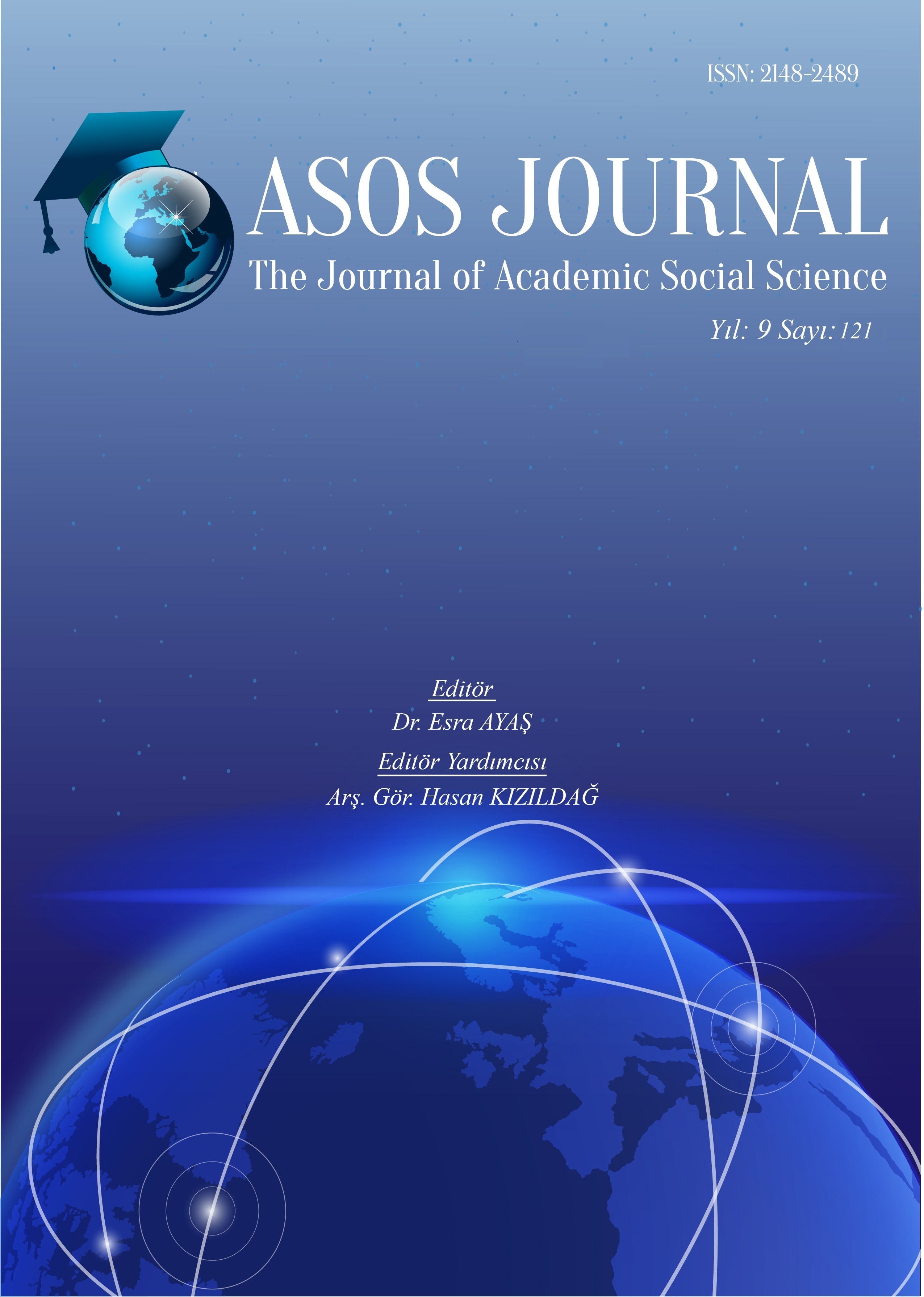Author :
Abstract
Çoksesli solfej, temel müzik bilgilerini kullanılarak birlikte müzik yapma becerisini geliştirmeyi amaçlar. “Solfege des Solfeges volume 6a” kitabı, farklı bestecilerin eserlerinden seçilmiş ezgilerin iki sesli olarak kullanıldığı bir kitaptır. Kitapta yer alan solfejlerin müzikal analizlerinin yapılmasının, çoksesli müziği oluşturan temel ögelerin tanınması açısından önemli olduğu düşünülmektedir. Bu çalışma, kitapta yer alan çoksesli solfejlerin genel özelliklerinin tespit edilmesi, bu solfejlerde kullanılan çokseslendirme yöntemlerinin belirlenmesi, bu sayede çoksesli müzik alanında eğitim alan ve eğitim veren kişilere katkı sağlanmasını amaçlamaktadır. Çalışmada ilk olarak, “Solfege des Solfeges Volume 6a” kitabındaki solfejler ölçü sayısı, hız terimleri, tempo, ton, ses aralığı, artikülasyon işaretleri, nüans terimleri bakımından belirlenmiştir. Daha sonra kitapta yer alan solfejlerde kullanılan yatay ve dikey çokseslendirme teknikleri analiz edilmiştir. Çalışmada yapılan analizler sonucunda; solfejlerde en çok do majör tonunun kullanıldığı, solfejlerin en çok 4/4’lük ölçü sayısında olduğu, dikey çokseslilik bakımından çoğunlukla uyumlu aralıkların kullanıldığı, yatay çokseslilik bakımından imitasyon, kanon ve füg tekniklerinin kullanıldığı tespit edilmiştir.
Keywords
Abstract
Polyphonic solfege aims to develop the skill of making music together by using basics of music. "Solfege des Solfeges Volume 6a" is a book in which melodies selected from the works of different composers are used in two voices. It is thought that the musical analysis of the solfeges in the book is important in the terms of recognized the basic elements that make up music. This study aims to determine the general features of the polyphonic solfeges in the book, to determine the polyphoni methods used in these solfeges, and to contribute to the students and teachers who studies on polyphonic solfeges. In the study, initially, the solfeges in the book "Solfege des Solfeges Volume 6a" were determined in terms of the time signatures, tempo marks, tone, pitch, articulation signs, and dynamics. Than, horizontal and vertical polyphony techniques used in solfeges in the book were analyzed. As a result of the analyzes; It has been determined that in solfeges, C major tones are used most, solfeges are mostly in 4/4 measures, mostly consonant intervals are used in terms of vertical polyphony, imitation, canon and fugue techniques are used in terms of horizontal polyphony.
Keywords
- Açılmış, H. (2020). Yatay ve Dikey Çoksesli Koro Eserlerine Dayalı Uygulamaların Öğrencilerin Müziksel İşitme, Okuma ve Yazma Başarılarına Etkisi. Yayınlanmamış doktora tezi. İnönü Üniversitesi Eğitim Bilimleri Enstitüsü.
- Cangal, N. (1988). Müzikte Çoksesliliğin Gerekliliği. I. Müzik Kongresi. Kültür ve Turizm Bakanlığı Güzel Sanatlar Genel Müdürlüğü, Ankara.
- Cangal, N. (1999). Armoni. Arkadaş Yayınevi.
- Çokamay, B. (2018). Muammer Sun’un Solfej Kitabındaki Çoksesli Alıştırma ve Okuma Parçalarının Analizi. İnsan ve Toplum Bilimleri Araştırmaları Dergisi. 7(1). 403-435.
- Eroy, O., Gürpınar, E., Zahal, O., Yıldız, D., Adıgüzel, A. (2017). A Content Analysis of Solfege Des Solfeges Books Used in Polyphonic Solfege Education. İnönü Üniversitesi Sanat ve Tasarım Dergisi. 7(16). 158-174.
- Kaya, E. ve Afacan, Ş. (2017). İki Sesli Solfej ve Dikte Çalışmaları. Pegem Akademi.
- Sağer. T., Gürpınar, E. ve Zahal, O. (2015). İşbirlikli Öğrenme Yöntemine Dayalı Uygulamaların Çoksesli Solfej Alan Başarısına Etkisi. Hacettepe Üniversitesi Eğitim Fakültesi Dergisi. 30(1). 195-212.
- Sevgi, A. (2001). Çoksesli Dikte ve Okuma Parçaları. Yurt Renkleri Yayınevi.
- Özaltunoğlu, Ö. ve Arapgirlioğlu, H. (2011) Solfej Eğitiminde Kullanılması Bakımından Ahmet Adnan Saygun’un Toplu Solfej II Kitabının Metodolojik Açıdan İncelenmesi. İnönü Üniversitesi Sanat ve Tasarım Dergisi. 1(2). 173-182.
- Özgür, Ü. ve Aydoğan, S. (1999). Müziksel İşitme Okuma. Sözkesen Matbaası.
- Yıldırım, A. ve Şimşek, H. (2016). Nitel Araştırma Yöntemleri. Seçkin Yayıncılık.
- Zuckmayer, E., Cangal, N. ve Atalay, A. (1977). Müzik Teorisi Armoni ve Kontrpuan. Yaygın Yüksek Öğretim Kurumu Eğitim Enstitüleri Müzik Bölümü.





